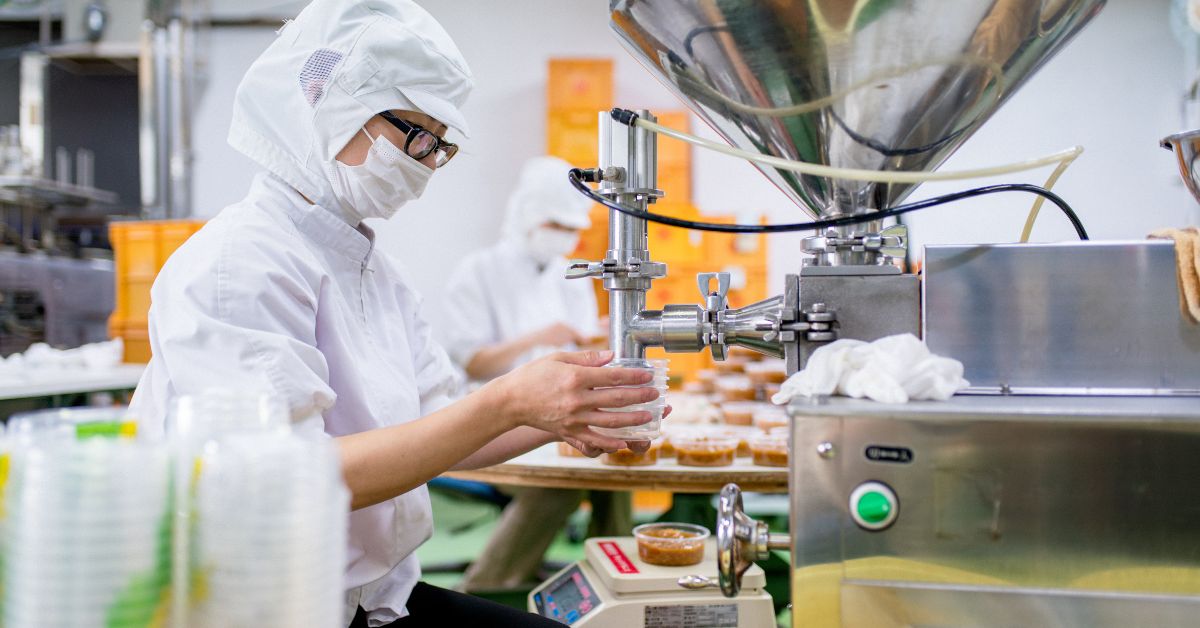Whether as consumers or producers, we understand that food and beverage production requires a highly clean environment. Most companies focus on water, raw materials, and the cleanliness of work surfaces for safe production, but neglect the impact of air quality on product safety.

Air is ubiquitous in the food and beverage production process. Microorganisms such as bacteria and mold spores attached to dust particles can be carried by airflow to food surfaces or enter the production process. Research indicates that approximately 20% of food contamination incidents can be traced back to airborne microorganisms. Especially in sectors with stringent microbial control requirements, such as ready-to-eat foods, dairy products, and beverages, effective air filtration not only extends product shelf life but also prevents foodborne illnesses, protecting consumer health and brand reputation.
Food and beverage factories face a variety of air pollution sources, primarily including:
>> Skin flakes, hair, and clothing fibers from personnel activities
>> Pollen, dust, and microorganisms introduced from outside air
>> Powders, aerosols, and vapors generated during the production process
>> Tiny particles released from packaging materials
>> Mold, spores, bacteria, or viruses
>> Volatile organic compounds (VOCs)
>> Odor-causing compounds (e.g., vinegar)
>> Fine dust from sugar, flour, and/or other dry powders
These pollutants can remain suspended in the air for extended periods and easily enter product packaging or the production process.
The main reasons why food factories are susceptible to air pollution include:
>> Frequent personnel and material movement increases the chance of contamination introduction.
>> Inadequate pressure differential control between the production area and the outside environment allows unclean air to infiltrate.
>> Inadequate air handling system design, resulting in airflow short-circuiting or dead zones.
>> Improper filter selection or untimely replacement leads to loss of filtration effectiveness.
>> Excessively high indoor humidity provides conditions for microbial growth.
When designing air filtration systems for food and beverage production workshops, the following aspects can be considered:
A combination of pre-filters, medium-efficiency filters, and high-efficiency filters. Pre-filters capture larger particles, protecting downstream filters; HEPA filters remove small-sized particles.
Based on cleanliness requirements, the factory is divided into different levels of cleanliness zones, and pressure differential control ensures airflow from high-cleanliness zones to low-cleanliness zones, preventing cross-contamination. • Select the appropriate filter: Choose specialized filters with antimicrobial coatings, high-temperature resistance, or high-humidity resistance based on different production areas and process requirements.
Establish a complete filter replacement plan and differential pressure monitoring system to ensure the continuous and effective operation of the filtration system.
In the increasingly competitive food and beverage industry, product quality and safety have become core competencies for enterprises. Establishing a comprehensive air filtration system is no longer an optional choice, but a necessary investment to ensure product safety and maintain brand reputation. Through scientifically designed, rationally selected, and properly maintained air filtration solutions, food and beverage companies can build an invisible yet crucial safety barrier, providing consumers with safer and higher-quality products, while gaining a lasting competitive advantage in the market.
For air filter sellers, the first lesson is to u
Whether as consumers or producers, we understand
As a production environment that represent the h
Contact: +1(213)786-4191
Phone: +1(213)786-4191
Tel: +1(213)786-4191
Email: Info@amorairglobal.com
Add: 1476 W 9th St Upland, CA, United States 91786